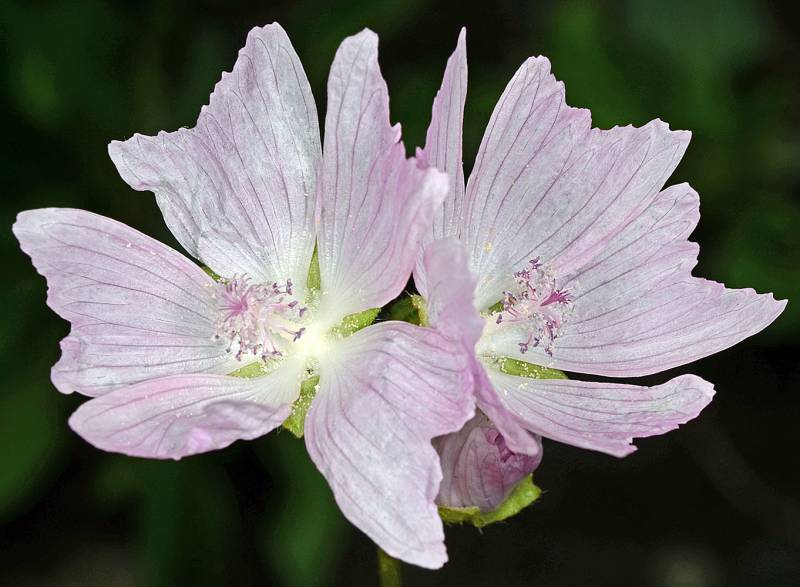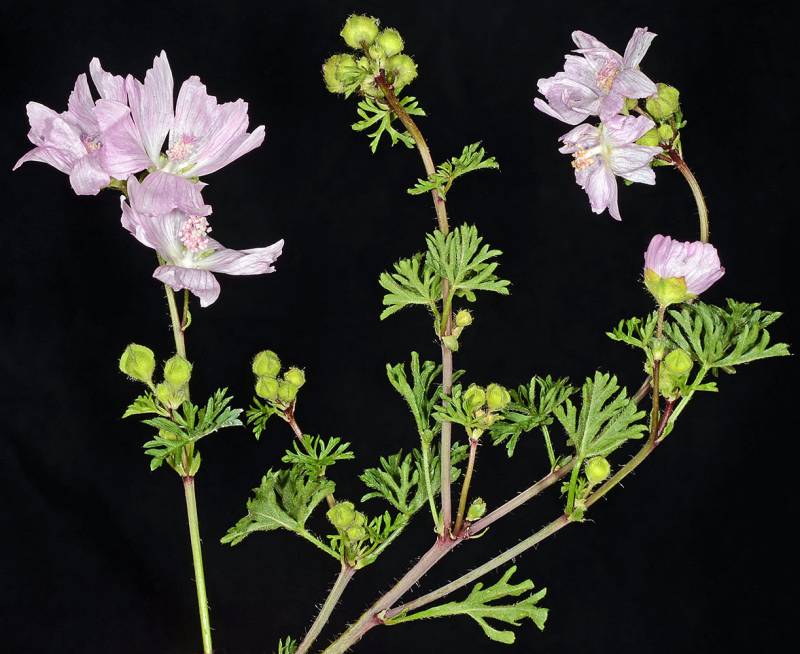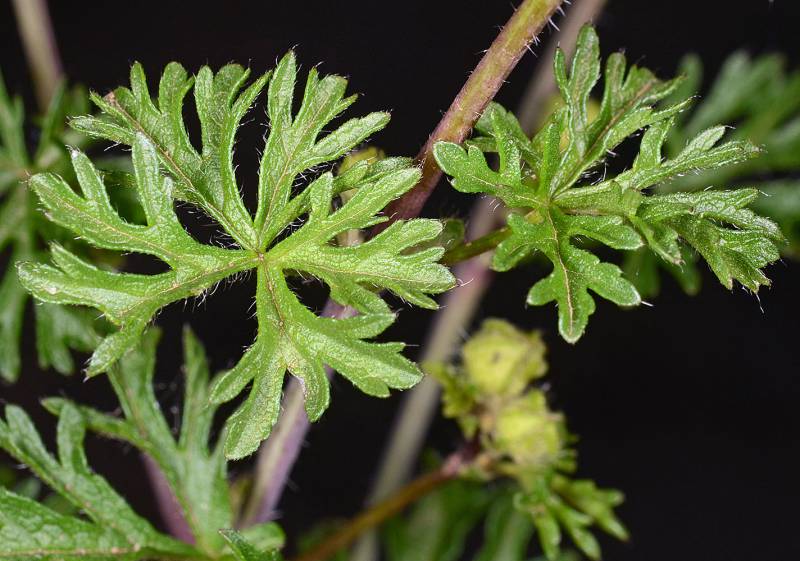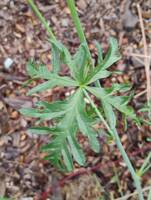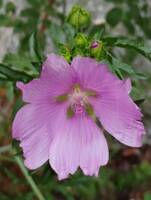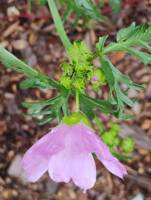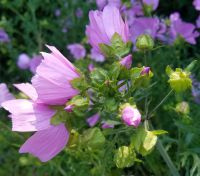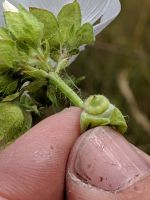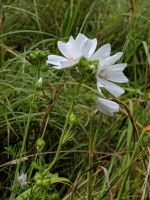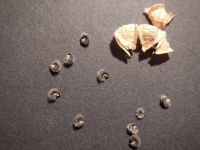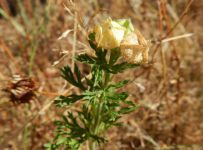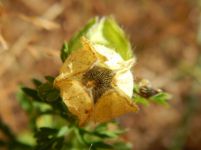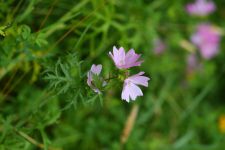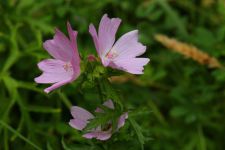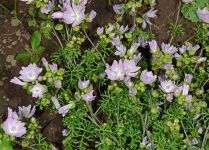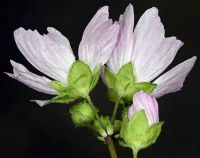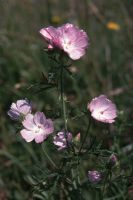Distribution: Occurring west of the Cascades crest in Washington; British Columbia to California, east to Montana and Wyoming, also in eastern North America.
Habitat: Roadsides, fields, and wastelots, where escaping from cultivation.
Flowers: May-July
Origin: Introduced from Europe
Growth Duration: Perennial
Conservation Status: Not of concern
Perennial herb, glabrous or with purple-based hairs, the stems 3-6 dm. tall.
Leaves palmately veined, long-petiolate, with stipules 4-7 mm. long, oblong; blades of the basal leaves cordate-reniform, shallowly lobed or with rounded teeth; blades of the upper cauline leaves cleft to the base into 5 lobes, and these dissected into linear segments.
Flowers usually single in the leaf axils, white to deep pink, 4-5 cm. broad; calyx deeply divided, with 5 narrow sepals and 3 bracteoles, petals 5, obcordate, with a wedge-shaped base; filaments fused into a tube, the stamens freed from the tube single or in pairs; style branches 10-15, equal in number to the carpels, stigmatic most of their length, not capitate; ovary superior, the carpels in a ring around a central axis.
Carpels densely hairy on the back, separating at maturity.
Publication: Sp. Pl. 2: 690. 1753.
PNW Herbaria: Specimen records of Malva moschata in the Consortium of Pacific Northwest Herbaria database
WA Flora Checklist: Malva moschata checklist entry
OregonFlora: Malva moschata information
E-Flora BC: Malva moschata atlas page
CalPhotos: Malva moschata photos

